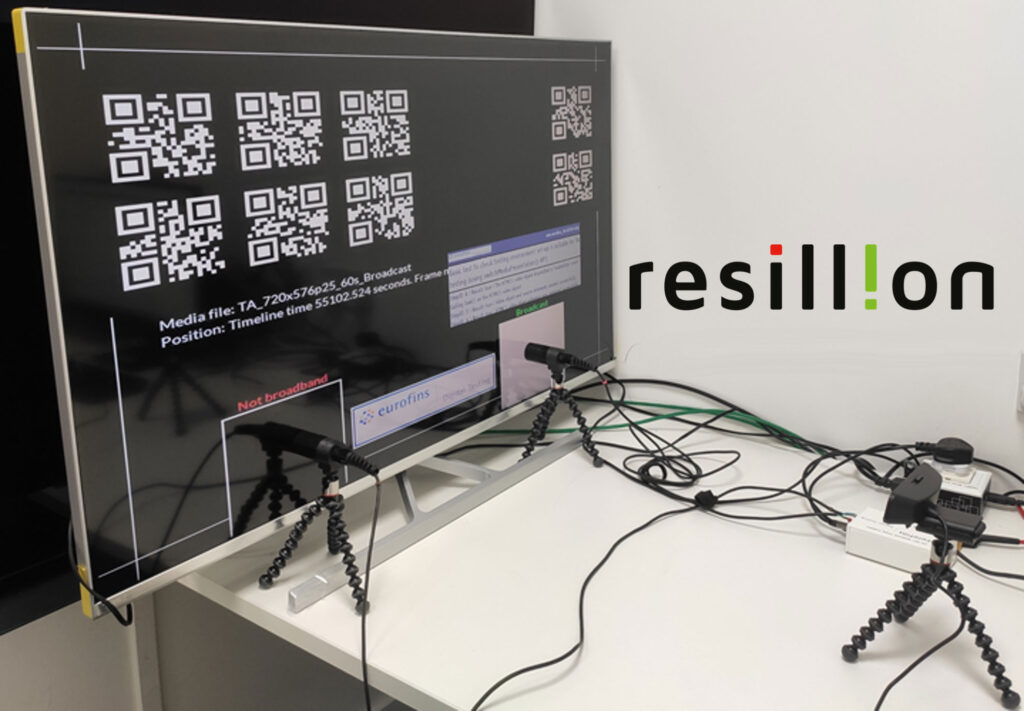
Lost in the lab? Navigating the complex world of DVB compliance
Ranjeet Kaur (DTG Testing) and Bob Campbell (Resillion)
In the rapidly advancing world of digital television, ensuring compliance and interoperability remains paramount. These twin pillars are the foundation of a horizontal market where devices and services work seamlessly together, fostering innovation, scalability, and user satisfaction. For DVB and HbbTV implementers, maintaining this balance is crucial for delivering the high-quality, seamless experiences that today’s consumers demand.
However, navigating the testing and compliance landscape is increasingly complex. Implementers face an intricate web of test suites and compliance requirements, which vary across markets and technologies. This article explores the current test and compliance landscape, highlighting the challenges, opportunities, and future directions for DVB implementers.
Why test?
Compliance with DVB standards is essential for fostering a unified market of devices and services. It provides the foundation for achieving interoperability, allowing diverse systems to function together. Yet compliance alone does not guarantee interoperability. The broad scope of standards and variations in interpretation can lead to inconsistencies, potentially undermining the user experience.
Investment in robust compliance and interoperability testing is vital for ensuring market cohesion. Stringent testing, supported by consumer logos or certification schemes, acts as both a ‘carrot’ and a ‘stick’, encouraging adherence to standards and preventing market fragmentation caused by non- standard implementations. For DVB and HbbTV, this investment safeguards a thriving ecosystem while enabling innovation and scalability.

Interoperability is particularly critical in today’s media landscape, where the lines between traditional broadcasting and streaming services are becoming increasingly blurred. Consumers expect seamless experiences across devices and platforms, a demand that places significant pressure on implementers to deliver robust solutions. Failure to meet these expectations can lead to diminished trust and adoption rates, underscoring the strategic importance of comprehensive testing. There follows a look at some of the key test suites and compliance requirements.
HbbTV Test Suite
The HbbTV Association Test Suite is a comprehensive tool designed to validate functionalities, such as application signalling and media formats. Regular updates ensure it evolves to address emerging industry needs, for example including support for DVB-I and targeted advertising. For manufacturers, this test suite is indispensable for ensuring their devices meet the demands of modern hybrid broadcast–broadband services.
The test suite’s adaptability to technological advancements ensures its relevance, particularly as new standards like targeted advertising reshape the way content is delivered and monetized. Manufacturers that utilize this suite gain a competitive advantage by aligning with industry expectations and maintaining compatibility across diverse consumer devices.
DVB test suites
The DVB Project provides minimal test sets to verify standards compliance. However, achieving full interoperability often depends on regional platform requirements and certification regimes. Examples include:
- United Kingdom: Freeview/Freely, operated by Everyone TV, relies on the DTG Test Suite, which supports the UK’s D-Book specifications.
- Italy: the UHD-Book compliance regime, managed by Tivù, utilizes materials from Resillion and Kineton.
- Nordic Countries: NorDig has developed a robust set of tools for its regional markets.
For DVB-S and DVB-C platforms, compliance remains fragmented, requiring manufacturers to navigate diverse local standards and testing frameworks. Some providers, such as Resillion, offer curated pan-European materials to streamline this process, but fragmentation continues to pose significant challenges.
The fragmented nature of these suites underscores the need for global harmonization. Regional differences often reflect unique market requirements but also create inefficiencies that manufacturers and service providers must address. Collaborative efforts to unify testing standards could alleviate these challenges and promote greater market cohesion.
For example, the DTG DVB-I Test Suite covers all the requirements of the base DVB-I specification and is relevant for all countries adopting this technology, ensuring interoperability, building product launch confidence, and preventing market fragmentation.
Interoperability testing
Beyond compliance, real-world interoperability testing is crucial, particularly for DVB services incorporating HbbTV applications and streaming. This includes tools like the HbbTV DRM Reference Application, DASH-IF’s conformance tool for stream validation, and commercial stream validation equipment.
Application compliance, especially for HbbTV, demands substantial investment. Labs such as DTG Testing, Sofia Digital, and Resillion maintain extensive ‘device zoos’, ensuring applications are tested against a broad array of representative receivers. Plugfests, organized by the Digital TV Group (DTG) and Deutsche TV-Plattform (DTVP) in cooperation with HbbTV, further enhance interoperability by allowing developers to test compatibility with new devices before they reach consumers.

Interoperability testing also highlights the growing complexity of the DVB ecosystem. With the advent of DVB-I, which aims to simplify the discovery of television services on streaming platforms, the interplay between compliance and real-world scenarios becomes even more critical. Test environments must evolve to accommodate this shift, integrating tools and methodologies that reflect the nuances of hybrid service delivery.
Solutions to fragmentation
The fragmented nature of the testing landscape presents several challenges for manufacturers and service providers:
- Increased costs – multiple compliance and interoperability tests for different markets drive up development expenses.
- Slower time-to-market – navigating varied requirements extends product development cycles.
- Interoperability gaps – fragmented approaches increase the likelihood of devices failing to work seamlessly across markets.
These challenges are compounded by the rapid pace of technological advancement. As new standards emerge and consumer expectations evolve, the need for comprehensive and harmonized testing frameworks becomes increasingly apparent. The DVB Scene March 2022 article, “Putting DVB-I Interoperability to the Test”, highlights efforts to unify test suites, demonstrating the benefits of such initiatives for stakeholders.
Harmonization of test suites and requirements offers a path forward. Consolidating testing standards across regions can reduce complexity and costs while enhancing user experiences. This approach would benefit manufacturers by simplifying development processes and reducing duplication of effort. It would also create a more consistent experience for consumers, fostering trust in DVB technologies.
Future developments
As the industry evolves, new technologies like DVB-I and targeted advertising will introduce additional complexity to testing frameworks. The focus will shift towards achieving broadcast-level experiences in streaming services, requiring test suites to adapt and expand.
Automation will play an increasingly significant role in simplifying compliance processes. Tools like the CTA WAVE “Streaming Media Test Suite – Devices”, which provides automated unit tests for media formats and streaming, exemplify this trend. Automated tools not only reduce testing time but also improve accuracy and reliability, enabling faster iteration and deployment.
Cybersecurity will also take centre stage. Integrating security testing into standard compliance frameworks will ensure that devices and services not only meet functional and interoperability standards but also adhere to stringent security requirements, safeguarding consumer data and trust.
Emerging technologies such as artificial intelligence (AI) and machine learning (ML) are likely to influence the testing landscape. These tools can identify patterns and anomalies in real time, offering new ways to address interoperability challenges. By leveraging AI and ML, testing processes can become more adaptive and predictive, further enhancing their effectiveness.
Next for implementers
The road ahead for DVB implementers lies in addressing fragmentation and embracing harmonization. Investment in unified test suites, interoperability frameworks, and advanced automated tools will be critical for reducing costs and ensuring consistent, high-quality user experiences.
Collaboration will be essential. By prioritizing harmonization and interoperability, the DVB community can build a sustainable, integrated ecosystem that meets the needs of a global audience. The adoption of technologies like DVB-I and advancements in targeted advertising will shape the industry’s future, and a robust testing and compliance framework will ensure its success.
Ultimately, a collaborative approach benefits all stakeholders. Manufacturers and service providers can reduce development complexity and costs, while consumers enjoy seamless, high-quality experiences. By fostering cooperation and innovation, the DVB ecosystem can continue to thrive in an increasingly interconnected digital world.
By recognizing the importance of unified testing frameworks and leveraging emerging technologies, the industry can navigate its challenges and embrace the opportunities ahead. In doing so, it will not only meet the demands of today’s consumers but also pave the way for future innovation and success.
This article first appeared in Issue 65 of DVB Scene magazine.
Ranjeet Kaur is Programme Director at DTG Testing. Bob Campbell is Global Head of Conformance and Interoperability at Resillion. Both are regular and active participants in standardization and compliance activities across both DVB and HbbTV.
